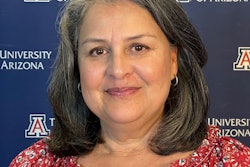If the U.S. Senate confirms Obama’s nomination, which is the first by a Democratic president in 15 years, Sotomayor, 54, will become the first Hispanic, the third woman, and the sixth Catholic to join the highest court of the land.
Zambrana, who is also interim director of the U.S. Latino Studies (USLT) initiative at the University of Maryland and author of the upcoming book, U.S. Latino Families and Communities in Transformation, said Obama’s choice reaffirms the national identity of Latino Americans.
Sotomayor’s nomination demonstrates Latino
During the May 26 announcement, Obama said Sotomayor “faced down barriers, overcame the odds and lived out the American dream that brought her parents here so long ago.”
Dr. Victoria-Maria MacDonald, an assistant professor and unit coordinator of minority and urban education at the University of Maryland, College Park, reiterated that Hispanics are still underrepresented in every profession in the U.S., including academia.
While Hispanics make up 15.1 percent of the U.S. population, the American Bar Association reports that the number of licensed Hispanic lawyers increased only from 2.5 percent in 1990 to 3.4 percent in 2000. Also, among the 150,031 students enrolled in law school in 2007-08, only 592 or 0.4 percent were of Puerto Rican descent like Sotomayor, and overall only 5.8 percent of law students in 2007-08 were of Latino origin, MacDonald said.
In 1968, the Mexican American Legal Defense Education Fund (MALDEF) was created in an effort to increase the number of Latino lawyers in this country.
“At that time, few Latino lawyers were available to fight against discrimination against Mexican Americans and Puerto Ricans, particularly in the areas of voting and jury rights, school desegregation, and access to higher education,” said MacDonald, who is the author of Latino Education in the United States:A Narrated History.
Dr. Jorge Duany, a professor of anthropology at the University of Puerto Rico, Río Piedras, and author of the book The Puerto Rican Nation on the Move:Identities on the Island and in the United States, said that, similar to President Obama’s historic election last year, Sotomayor’s expected confirmation as the first Hispanic justice does not necessarily signal that the United States is a “post racial” society but that it is moving toward that goal.
“It’s certainly a multicultural and multiethnic society, and its major institutions should mirror this fact,” Duany told Diverse.
Duany added that Sotomayor’s public visibility as both a Latina and an American should help to “dispel unfounded fears of the ‘Hispanic threat’ to the American national identity.”
The U.S. government established Puerto Rico as an official U.S. territory in 1898, and Puerto Ricans have been U.S. citizens since 1917, yet the U.S. Supreme Court has never had a Puerto Rican nominee until now, Duany said.
“That the (nominated) judge is a U.S.-born Puerto Rican is even more significant, given that more persons of Puerto Rican origin now live in the U.S. mainland than on the island. I hope that her tenure in the Supreme Court will help to raise more public awareness about the relations between Puerto Rico and the United States,” Duany said.
© Copyright 2005 by DiverseEducation.com















